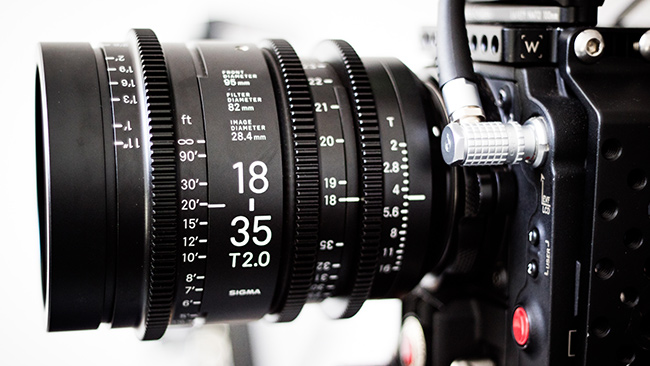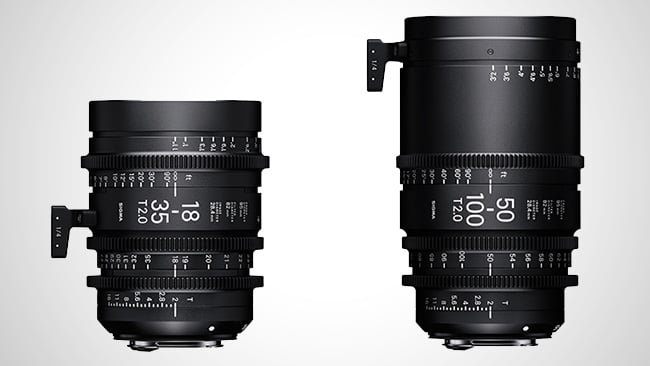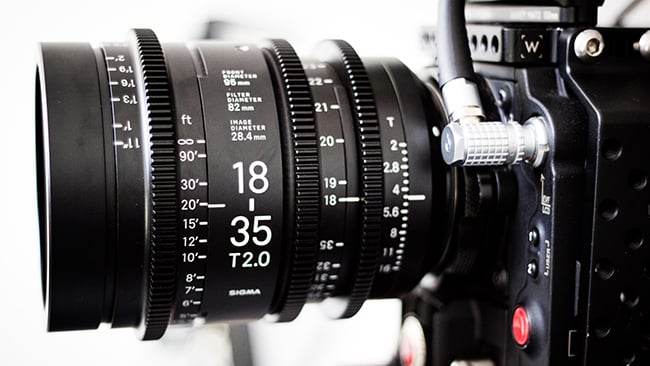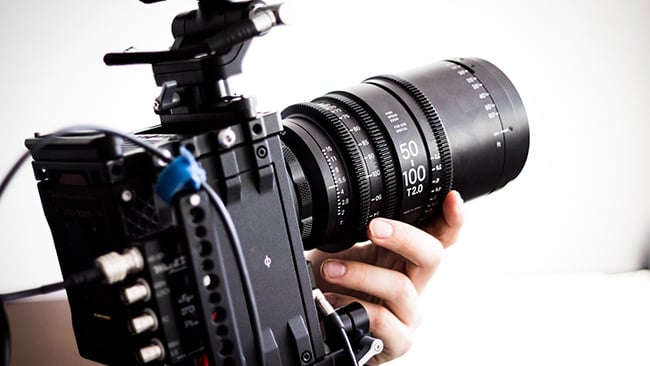
 A great choice for the money? The latest affordable cine lenses from Sigma
A great choice for the money? The latest affordable cine lenses from Sigma
The market for affordable cinema glass is becoming ever more competitive. Nick Morrison and DP Ted Rex King took a look at the latest cinema zooms from Sigma to hit the stores.
Earlier this month, my DP Ted Rex King and I had the pleasure of testing Sigma's new cinema zooms. Safely ensconced in our Small Giant office, away from the bustle of Brooklyn outside, our first impressions of the 18-35 T2 and 50-100 T2 were extremely positive.
Blessed with good construction, strong mechanics, excellent focal length range, and unusual speed (T2, how awesome is that?), these zooms fill a unique niche in the pro cinema market. There's really nothing else like them, especially for the price.
Most recently, the closest budget zoom pair was perhaps the RED 18-50 2.8 and 50-150 2.8, but they were more expensive, and more importantly a stop slower, showing how far affordable PL zooms have come in only half a decade.
These Sigma Zooms are modern not only in their feature set, but also in the market they're catering to. As digital production remakes the size and scale of so many shoots, new gear is required. Smaller crews need lighter camera packages, faster glass, and lighting that's brighter and more portable. With their fingers clearly on the indie pulse, in steps Sigma with these two Cinema zooms, every owner/operator's dream.
For crews looking for an in-house set of glass, these two zooms represent great value. They are basically a set of primes in two lenses. You get T2 coverage from 18-100 (not too dissimilar from a regular set of Standard Primes, which are T2 between 16 and 85).
The mechanics make them a step up from cinemodded stills glass (especially with the geared iris) - and the 18-35 also looks like a fantastic zoom for gimbal work (the size, range, and speed are ideal).

Great value? The Sigma 18-35mm T2.0
Optical quality
Optically, these lenses are modern in every way - sharp, fast, and exacting. Don't expect to find any of the charm or whimsy of vintage glass here - ie no funky bokeh, sublime flares, or fun aberrations at the edges (Standard Primes, Super Speeds, Baltars, Pancros, Lomos, Contax’s, Leica R’s and other classic glass still have lots of shelf life yet). Nevertheless, these zooms are more than good enough to tell a great story. If you need some funk, filtration can be your friend - slap on some Hollywood Black Magic, Glimmerglass, or Smoque and you're good to go.
The only real drawbacks Ted and I saw with these two Indie-market zooms was when we started to get more technical and discerning. As variable primes, on basic setups without relying on witness marks both zooms held up well. However, once we peered under the hood more, some of the realities of budget and mass production seemed to come to light. For example, the markings on the 18-35 weren't always accurate. At 18mm, when our subject was 6 feet away, the 18-35's markings showed 10'. Four feet off is pretty significant, and would give any AC pause. To be fair, at 35mm the markings were more reliable, as were basically all of them on the 50-100.
Perhaps a quick collimation from a local tech is all these fantastic zooms need? Or even better, maybe consider purchasing these zooms from dealers such as Duclos or Abel - who reportedly triple-check and collimate lenses before placing them on sale.
Finally, the 50-100 itself had other technical quirks worth noting. While the witness marks were great, there was some focus shift while zooming, and the breathing was noticeable, especially at the longer end.

Tackling the long end. The Sigma 50-100mm T2.0
However, these seem like minor issues when you consider the phenomenal value these lenses represent. Add in the uniform front sizes (95mm), identical spacing of the gears, and aggressive pricing, and it's easy to see how Sigma may have a hit on their hands. Even more remarkable is that these zooms aren't even Sigma's most disruptive product - that’s certainly their new set of T1.4 full frame Cinema Primes, designed and marketed to compete with high end primes directly.
In the spirit of a recent musing by RED President Jarred Land, it’s a good time to be a creative.
Happy shooting.
Both the Sigma 18-35mm T2.0 and the 50-100mm T2.0 retail at $3999.
Tags: Production


Comments